|
Fiat G.50 bis/AS
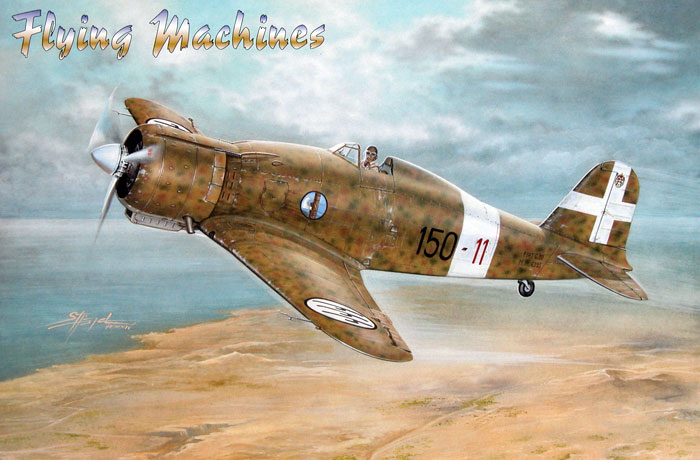
Flying Machines,
1/48 scale
S
u m m a r y
|
| Catalogue Number: |
Kit No. FM48002 - Fiat G.50 bis/AS |
| Scale: |
1/48 |
| Contents and Media: |
47 parts in grey plastic; 3 in
clear injection moulded plastic (2 not used); 37 pale yellow resin parts;
1 photo-etched fret; 1 sheet of printed clear acetate; markings for
two aircraft. |
| Price: |
Euro € 35
from Misterkit website |
| Review Type: |
FirstLook |
| Advantages: |
Important subject; addresses
accuracy issues of Secter/Hasegawa kit; deep wheel well; crisply engraved panel
lines; excellent resin parts good level of detail overall; good quality
plastic; thin and clear transparencies; includes alternate cowls,
filters and optional canopy for early version; two sets of markings supplied. |
| Disadvantages: |
Limited run production means that
modelling skills are required; some raised ejector pins need to be
removed prior to construction; somewhat thick trailing edges. |
| Recommendation: |
Recommended |
Reviewed by Brett Green
with additional material supplied by
Steven "Modeldad" Eisenman

HyperScale is proudly supported by Squadron.com
Flying Machines, a brand from Misterkit from Italy,
continues their range of Italian aircraft with a Fiat G.50 bis/AS in
1/48 scale.
A Japanese company called Secter released a Fiat G.50 (early Series) kit
in Regia Aeronautica markings in the early 1990s. This kits was later
taken up and marketed by Hasegawa as a Finnish aircraft. Typical of
modern Japanese long-run models, these Fiat G.50s featured smooth
plastic with crisply recessed panel lines. Unfortunately, the kits
suffered from shape problems, plus very shallow wheel wells and
nonexistent cockpit detail. Some years ago Misterkit released a
corrected wing (I bought that one myself) to improve the Secter /
Hasegawa kit, but this was clearly not a satisfactory solution for this
Italian company.
Flying Machines has now released an all-new tool 1/48 scale Fiat G.50bis
(late Series) which shares no parts in common with the Secter / Hasegawa
offerings. The kit also provides the sand filter to make an AS aircraft.
One thing modelers who have the old Secter kit will notice is that the
wings in the Flying Machines kit are longer (Note: early and late Series
aircraft had the same wing span.). According to the references, the wing
span was 10.99 meters / 36.05 feet. The Flying Machines kit seems to
measure out exactly. But, when compared to the Ali D’Italia drawing,
they are longer; yet the Sector kit wings match the drawings. It appears
that the drawing, while stated to be 1/48, are small, measuring out to
10.86 meters / 35.66 feet.
The other important improvement in the Flying Machines kit is the resin
wheel well insert. This fixes the major problem of the Secter’s too, too
shallow wheel well. The new kit has a well nearly a foot in depth when
finished.
In common with their earlier 1/48 scale Reggiane Re.2005 and the recent
Piaggio P.108B, Flying Machines' Fiat G.50 has been produced by one of
the limited run companies in the Czech Republic.
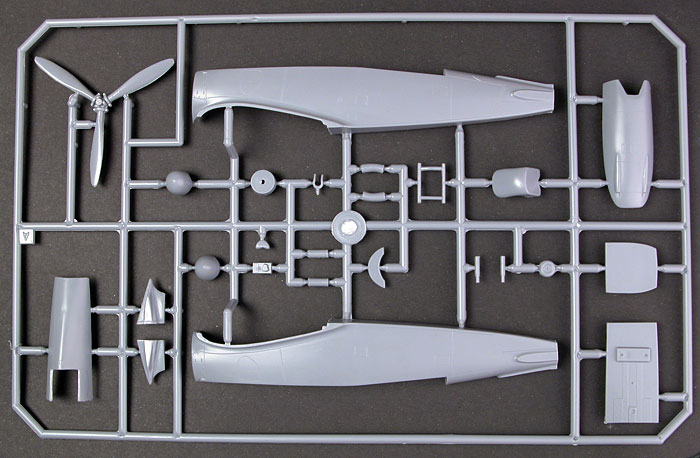
Click
the thumbnails below to view larger images:
The plastic parts are good with a satin texture and
crisply recessed panel lines. However, I don’t believe that some aspects
of the kit are quite up to the highest level of Czech-sourced kits. A
noticeable area requiring attention is the fairly thick wing trailing
edges. The trailing edges are a particular problem with regard to the
rudder and tailplanes, as they are all made up of two halves. Also,
while the cockpit is a marked improvement over the Secter kit, most of
the cockpit detail is molded onto the inside of the fuselage. This may
not, however, be of much consequence to most modelers, as the cockpit
opening is quite small.
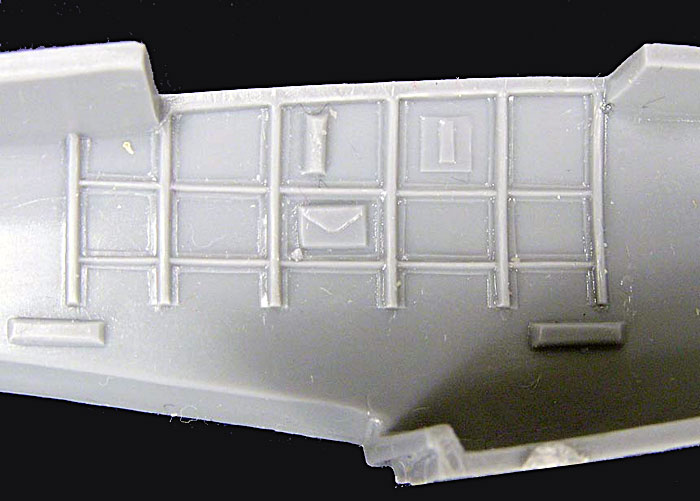
The kit also exhibits some of the predictable
hallmarks of a limited run kit including the absence of locating pins.
The modeler should take some extra time to remove any ejector pins prior
to assembly, and test fit thoroughly before committing parts to glue.
The small photo-etched fret includes the engine ignition harness, the
rather painful looking strap and chain harness, the upper instrument
panel (completed with acetate instruments – the lower instrument panel
is in resin) and other cockpit details.
Transparencies are also supplied as injection molded parts. They are
very thin, clear and free of distortion with well defined raised
framing. You will need to check pictures to determine weather the side
windows were used (it appears that the side windows were not in place
for the two markings supplied with the kit).
The clear parts include an option for the early
version with the enclosed cockpit, but this is marked "not for use" in
this boxing. Given the separate fore and aft fuselage decking, one could
expect, or at least hope for, a 1st Series G. 50. The other clear part
with the scalloped side window appears to be used in the experimental G.
50bis A (extended wing assault variant).
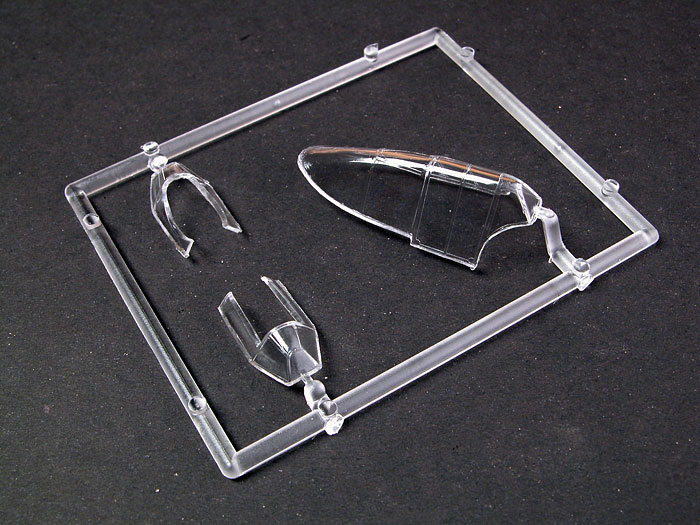
Resin is provided for the engine, wheel wells,
alternate intakes and cockpit details. The engine is especially
impressive, and should look terrific with the photo-etched ignition
harness installed. The engine will play an important role in mounting
the cowl. As there is virtually no positive attachment points between
the cowl and fuselage, the cowl will need to fit securely on the
cylinders.
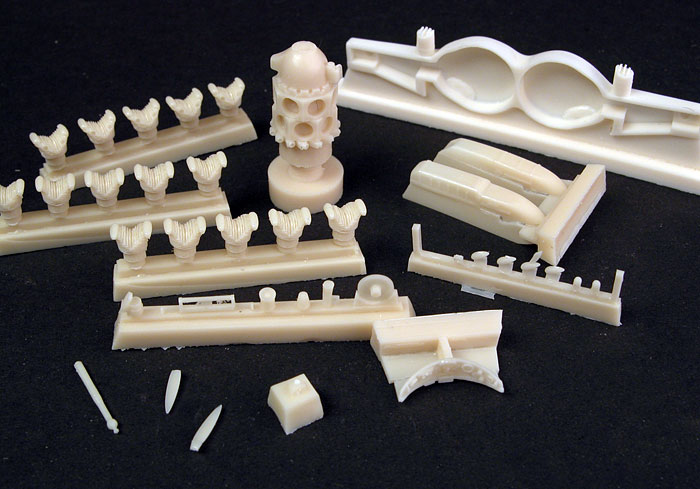
Engine cowls are also supplied in resin. Two styles
are included - smooth and molded on rocker arm clearance bumps These are
very nice one-piece castings. However, a steady hand and a sharp razor
saw will be helpful in removing the full circumference casting ring on
the front of the nose. I would recommend not cutting directly against
the face of the cowl. Leave about 1/16 inch, and do the final clean up
with a sanding stick or sand paper. Care must be taken in cutting and
sanding, as the resin is quite thin.
The packaging of delicate resin parts in a bag with larger parts
highlights a recurring problem. The aileron counter balance weights are
molded in delicate resin, and three of the four had the attachment
points broken off. An annoyance, if nothing else.
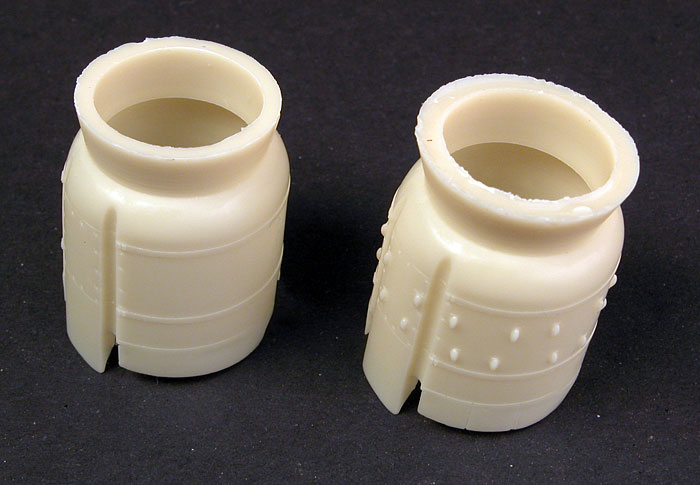
Now for the kit’s options – which cowl to use and
which intake to use. I
Intakes
Dealing with the intakes first, the kit has the
standard intake and longer and deeper sand filter. It was the
application of the sand filter, and other internal modifications, that
gave the G. 50 the AS designation. Both markings in the kit are for
aircraft with the sand filter. However, you can use the regular intake
if you have other makings, such as those in the Sky decal sheet for the
G. 50.
Cowls
It appears that the cowl with the bumps was used on
aircraft manufactured by AERITALIA, a Fiat subsidiary, and a few Series
VII aircraft manufactured by CMASA, another, but more distant, Fiat
subsidiary. Either a serial numbers or a picture would help in
identifying aircraft with cowl bumps. Although the paint and decal guide
shows both aircraft having cowl bumps, pictures do not show this to be
the case. The G. 50bis AS marked 150-11 is a Series VII aircraft, but it
had a smooth cowl. Aircraft 151-2 is also a Series VII aircraft, but the
only picture of this aircraft shows it as a derelict, without its
cowling, so it is unknown.
Markings for two aircraft are provided:
-
151-2 / MM6385: G.
50bis AS Series VII of 151 Squadrriglia, 20 Gruppo. Nocciola Chiaro
(Hazelnut) with Verde Oliva Scuro (Dark Olive Green) splotches.
Gregio Azzurro Chiaro (Light Blue-Gray) underside. The directions
show the crest of the House of Savoy on the tail, but a photo does
not show it.
-
150-11 / MM6393: G.
50bis AS of 150 Squadriliglia, 2 Gruppo. This aircraft was flown by
Tullio De Prato, commanding officer of 150 Squadriglia. Giallo
Mimeteco 3 (“orange toned” Yellow Sand) with Verde Mimetico 3 (Dark
Green) and Marrone Mimetico 2 (Red-Brown) very dense top-side
mottle. Griggi Mimetico (Light Gray) under-side.
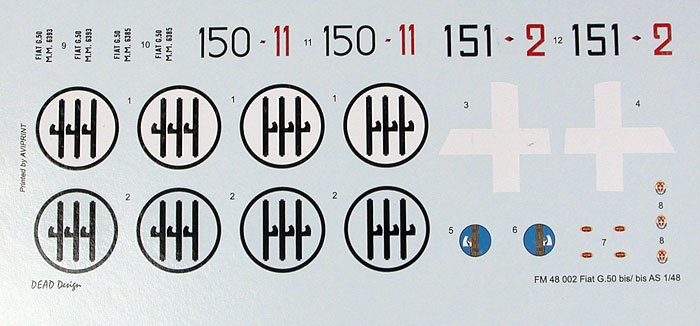
The decals are produced by Aviprint, and look thin,
crisply printed, opaque and in perfect register.
Flying Machines' 1/48 scale Fiat G.50 is a more
accurate, better detailed offering than the 1990's vintage Secter/Hasegawa
kits. Granted, it will take more time and some more modeling skills to
build than the mainstream Japanese kit, but the result will be worth the
effort to Regia Aeronautica modelers.
This is a very complete package too, with its resin and photo-etched
parts
Finally, if you have the Sky decals for the G. 50, the kit allows the
modeler a few options for the G. 50bis model. Note, this kit cannot be
used to make an early Series G.50 , including a Finnish G. 50, as those
aircraft had a noticeably different fin and rudder.
Recommended
Thanks to
Misterkit for the review
sample.
References:
-
ALI
D’ITALIA 6; La Bancarella Aeronautica – Torino, 1997
-
Profile No. 188, The Fiat G.50; Profile Publications
.
Flying Machines and
Misterkit kits and accessories are
available online from Misterkit's website.
Review Text and Images Copyright © 2004 by
Brett Green and
Steven "Modeldad" Eisenman
Page Created 14 October, 2004
Last updated 07 November, 2004
Back to HyperScale Main Page
Back to Reviews Page
|
Home | What's
New | Features
| Gallery |
Reviews | Reference
| Forum
| Search